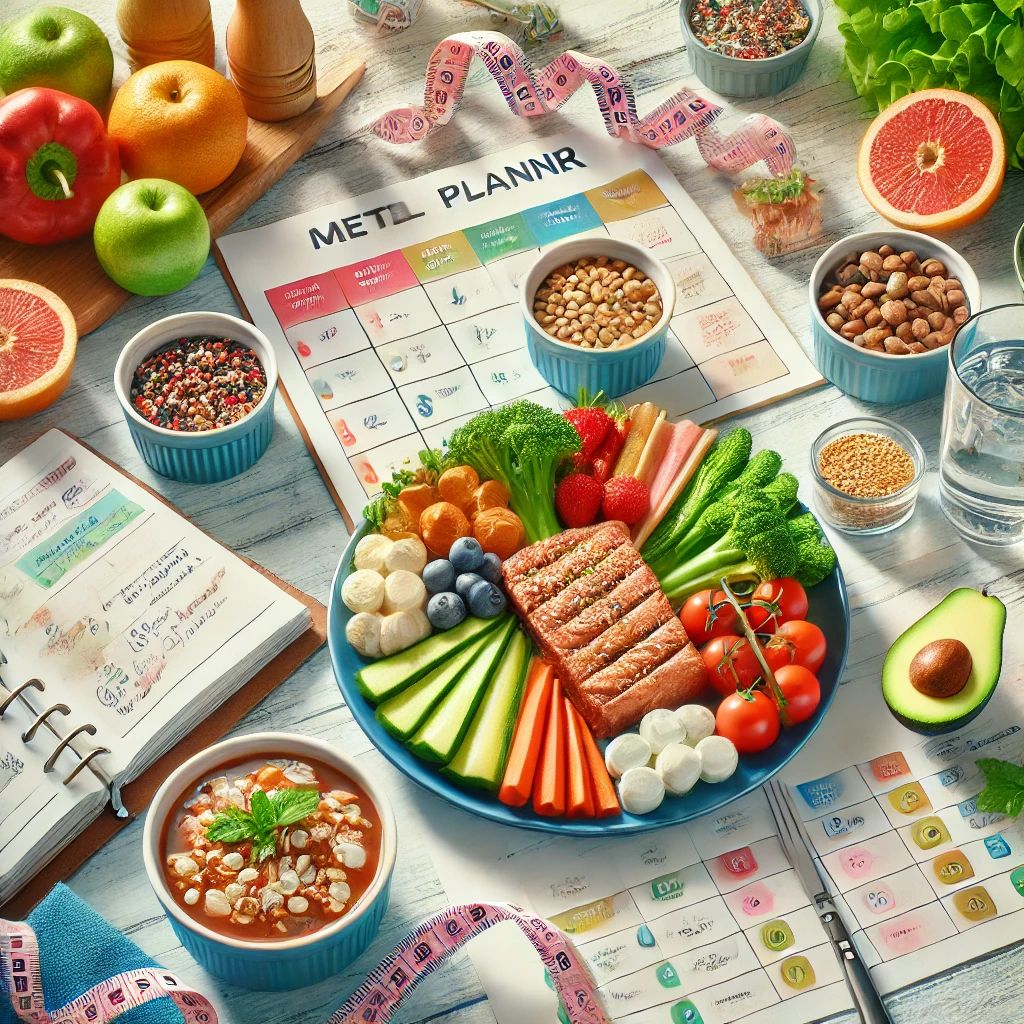
Why Nutrition Is Key to Weight Loss
Losing weight is not just about cutting calories; it’s about nourishing your body with the right balance of nutrients to support your energy levels, metabolism, and overall health. A well-structured nutrition plan can help you achieve sustainable weight loss without feeling deprived or fatigued. Here’s how to create a practical and effective nutrition plan for your weight loss journey.
1. Understand Your Calorie Needs
Calculate Your Basal Metabolic Rate (BMR)
Your BMR is the number of calories your body needs to perform basic functions like breathing and digestion.Use an online calculator or consult a professional to determine your BMR and adjust based on your activity level.Create a Calorie Deficit
Aim for a moderate deficit of 500–750 calories per day to lose 1–2 pounds per week.Avoid extreme calorie restrictions, which can lead to fatigue and muscle loss.2. Prioritize Macronutrient Balance
Protein
Protein supports muscle preservation, boosts metabolism, and keeps you full.Include lean sources like chicken, fish, eggs, tofu, and legumes in each meal.Aim for 20–30 grams of protein per meal.Healthy Fats
Fats are essential for hormone production and satiety.Opt for sources like avocados, nuts, seeds, olive oil, and fatty fish.Keep fat intake moderate, around 20–30% of your daily calories.Complex Carbohydrates
Carbs provide energy and support brain function.Choose whole grains, quinoa, oats, sweet potatoes, and fruits.Avoid refined carbs like white bread, pastries, and sugary snacks.3. Plan Your Meals and Snacks
Breakfast
Start the day with a high-protein, fiber-rich meal to stabilize blood sugar levels.Examples: Greek yogurt with berries and nuts, scrambled eggs with spinach, or overnight oats.Lunch
Include lean protein, complex carbs, and plenty of vegetables.Examples: Grilled chicken salad with avocado and quinoa or a turkey wrap with a side of roasted veggies.Dinner
Keep it light but nutrient-dense.Examples: Baked salmon with steamed broccoli and brown rice or a tofu stir-fry with mixed vegetables.Snacks
Opt for healthy, portion-controlled options to curb hunger between meals.Examples: Hummus with carrots, a handful of almonds, or an apple with peanut butter.4. Practice Portion Control
Use Smaller Plates
Serving meals on smaller plates can help control portion sizes and prevent overeating.Measure Portions
Use a kitchen scale or measuring cups to ensure you’re eating appropriate amounts.Pay attention to serving sizes for calorie-dense foods like nuts and oils.Eat Mindfully
Slow down and savor each bite to recognize when you’re full.5. Hydration and Beverages
Drink Plenty of Water
Aim for 8–10 glasses of water daily to stay hydrated and support metabolism.Start your day with a glass of water and drink a glass before each meal.Limit Sugary Drinks
Replace soda and juice with water, herbal tea, or black coffee.Avoid Excess Alcohol
Alcoholic beverages are calorie-dense and can hinder weight loss progress.6. Incorporate Flexibility
80/20 Rule
Stick to your nutrition plan 80% of the time and allow for indulgences 20% of the time.Enjoying occasional treats can help you stay motivated without feeling restricted.Meal Prep
Plan and prepare meals in advance to stay on track, especially during busy weeks.Keep healthy snacks readily available to avoid reaching for processed options.7. Track Your Progress
Keep a Food Journal
Record your meals and snacks to stay accountable and identify areas for improvement.Use apps like MyFitnessPal to track calories and macronutrients.Listen to Your Body
Pay attention to how your body responds to different foods and adjust your plan as needed.Conclusion: Your Path to Sustainable Weight Loss
A well-designed nutrition plan is the cornerstone of effective and sustainable weight loss. By focusing on balanced meals, portion control, and mindful eating, you can achieve your goals while maintaining energy and satisfaction. Remember, weight loss is a journey—be patient with yourself and celebrate every step of progress.
The article was prepared by Ira Levovich.



